Can’t get enough of that minty fresh taste? Growing mint in the garden is so easy to do, so why not have fresh mint at your disposal for garnishing foods, making mojitos, and adding some refreshing coolness to your dishes? Here’s how to grow mint from seed or as cuttings.
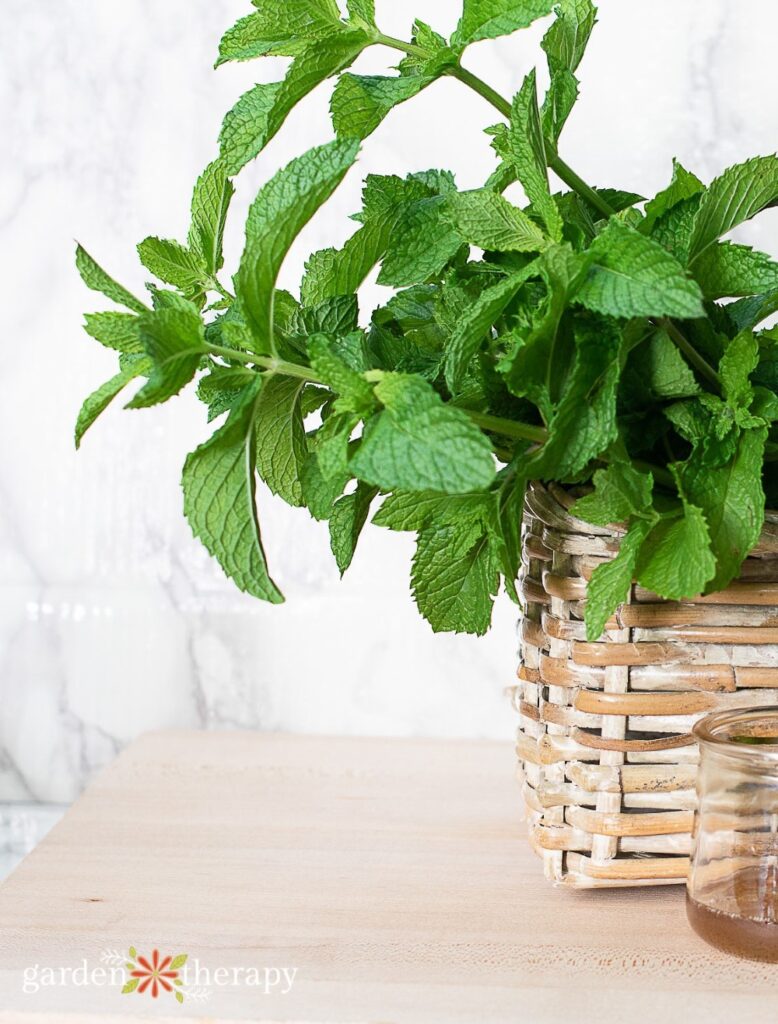
I love mint because it’s one of the most accessible herbs to enjoy. People are used to the fresh flavour in their toothpaste, gum, and desserts. Who doesn’t love a mint chocolate treat?
It’s also one of the most accessible herbs to grow in the garden, easily starting from seed and requiring very little maintenance to grow big and happy. A little too big…but more on that later.
I have quite a few little mint tips and tricks to share with you, so let’s jump into how to grow mint!
This post will cover…
- Lori’s Green Blessing
- Choosing a Mint Variety
- How to Grow Mint From Seed
- How to Plant Mint
- How to Grow Mint From Cuttings
- How to Grow Mint Indoors
- Mint Care Requirements
- How to Enjoy Mint
- Mojito Mint Popsicles
- Sun Tea
- Ginger Mint Lemonade
- Herb Infused Vinegar
- Fresh Herb Finishing Salt
- Frequently Asked Questions About Growing Mint
- More Tips for Growing Mint
Lori’s Green Blessing
Our Garden Therapy herbalist mentor, Lori Snyder, has great insight on mint. Here’s what she has to say:
Found in the Lamiaceae family with 150 genera and over 3500+ species worldwide, peppermint transmits the floral message ‘the warmth of my heart”, a way to express intentions during times when women were being courted.
All mints can ease pain, counter headaches, restore order to the digestive tract, and are an excellent source of calcium and other minerals. Make teas or infuse fresh finely chopped leaves into honey which helps to preserve its anti-oxidant and anti-spasmodic volatile oils.
Use externally for wound healing or homemade facials and internally for menstrual cramps, digestive upsets, colds, cases of flu, and sore throats. There is no known toxicity when using fresh or dried plants, but be very mindful when using essential oils.
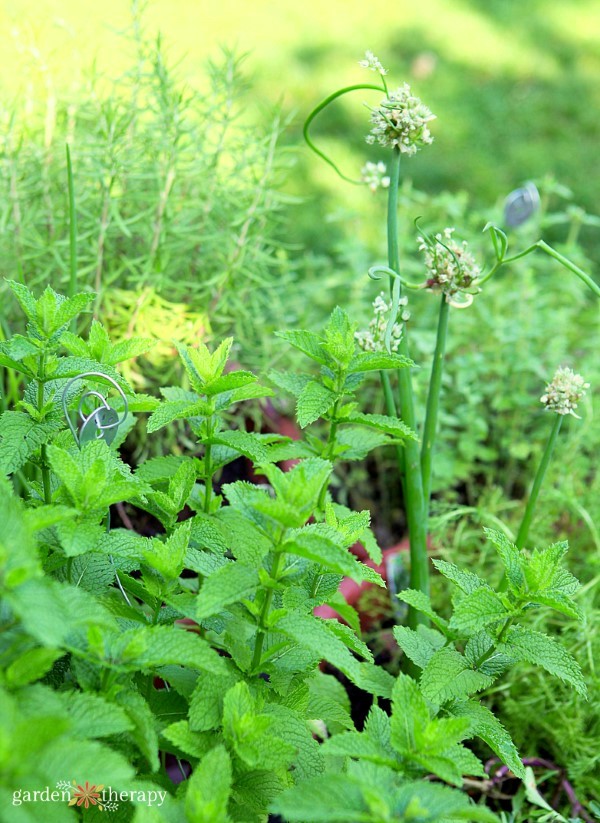
Choosing a Mint Variety
There are about 24 species in the mint genus, Mentha sp., and even more in the mint family Lamiaceae (lemon balm, basil, and catmint, just to name a few!). So there’s not just one mint for you to enjoy!
I have a few favourite mint varieties that I talk about in this post, including peppermint and pineapple mint. While they all have that refreshing and cooling taste, they each have a unique flavour to explore.
Some growers say that cross-pollination between mints is difficult to control. The result is that the mint may not be true to its seeds. So, if you want specific varieties, make sure to get your seeds from a reputable source.
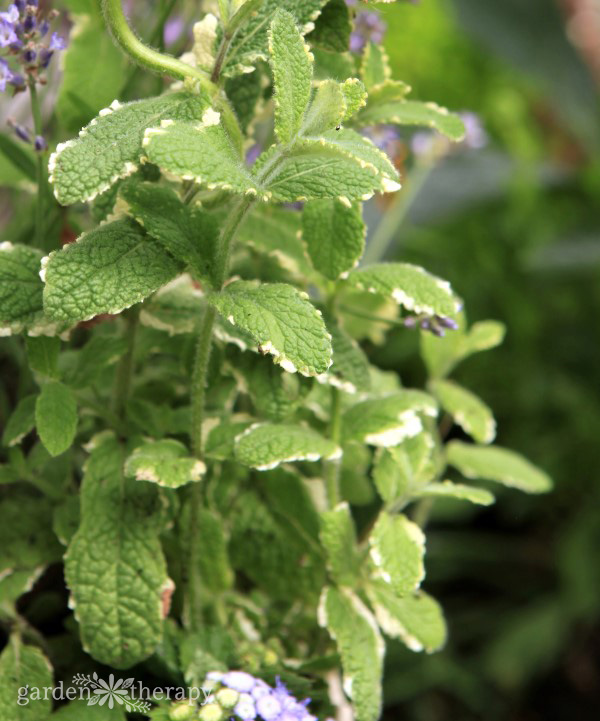
How to Grow Mint From Seed
Mint is a very easy herb to grow, and you can quickly get a big harvest your first year just by planting some seeds. It’s hardy to zone 4, making it a perennial in most places.
If you want a head start on your mint, you can sow the seeds indoors 8-10 weeks before the last frost. Placing them on a heat mat can help aid and speed up germination.
You can also direct sow the mint seed in late spring. Seeds will take 10-16 days to germinate.
Sow the seeds ¼” deep. AKA, barely pop them into the soil. I like to sprinkle them on top of the soil and then gently step on them to sow them into the ground before giving them a healthy dose of water.
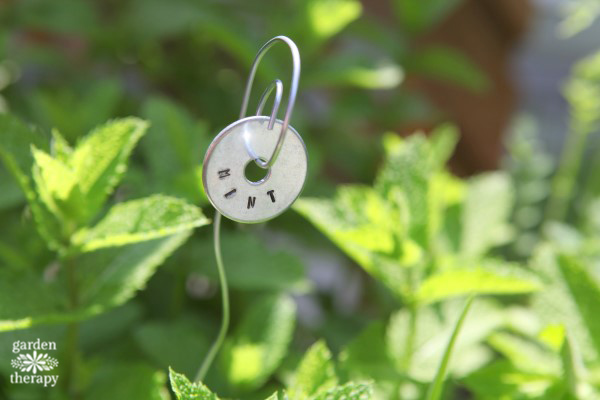
How to Plant Mint
The biggest thing you need to know about mint is that it can get pretty invasive. One mint plant can take over a bed in one summer, so you need to actively control it to stop the spread.
For this reason, I always recommend that people grow mint in containers or raised beds. You can add it to your perennial herb garden, placing it on a patio or deck where it’s easy to access and harvest the mint as needed.
Mint is also an excellent companion plant, helping to repel aphids, cabbage moths, flea beetles and more. You can place mint in containers around your vegetable garden or place it in the vegetable garden with the knowledge that you will have to keep a watchful eye on it to prevent it from spreading too much.
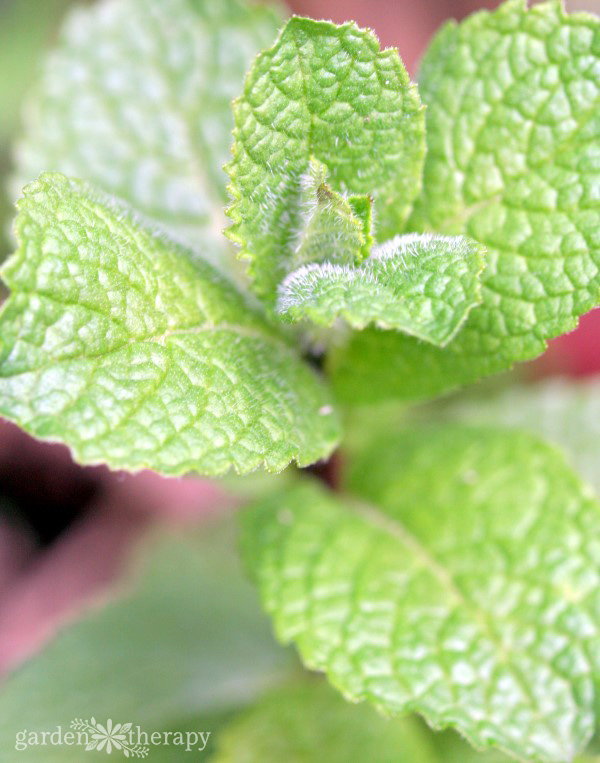
How to Grow Mint From Cuttings
You can also grow mint by taking cuttings. This is great if you find a mint variety from a friend’s or community garden you would like to propagate.
To take a cutting, cut just above a node (where the leaves come out) from the top part of the plant. The cutting should be about 4 inches long.
Remove the bottom few leaves, as you don’t want any leaves to sit underwater. Place the mint cutting in a jar of water.
The mint should start developing roots within a couple of days. Transplant the mint into a pot of soil or outside when the roots are about an inch long.
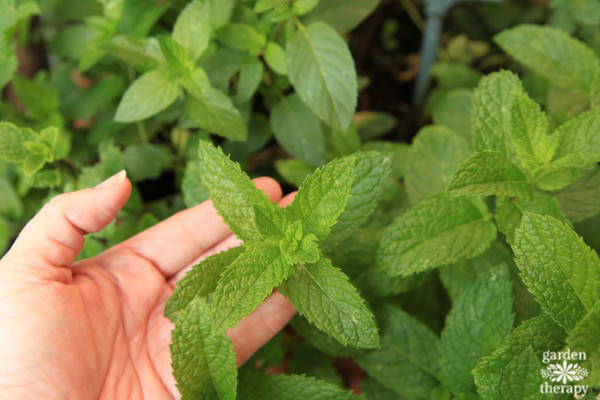
How to Grow Mint Indoors
A leafy green, mint does pretty well growing inside compared to other herbs. Place the mint in a bright location and put it in a container with drainage holes in good potting soil.
When the mint gets sad and droopy, place it outdoors and start a new plant from seed or a clipping. Or, they’re fairly inexpensive to replace with a new mint from the garden centre.
You can even take in some mint from outside and bring it indoors over the winter. Place it in a bright window to enjoy during the off-season.
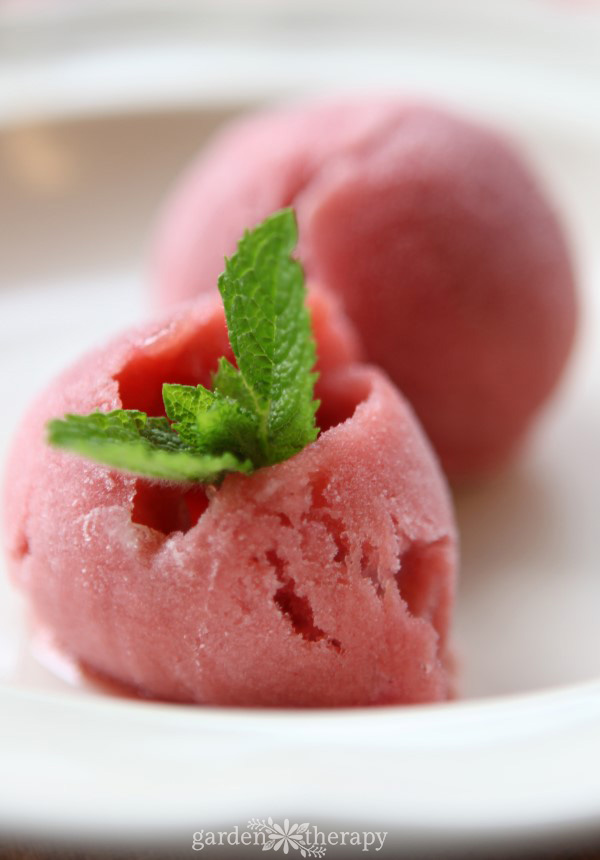
Mint Care Requirements
Mint is a cool season herb, so you’ll find it emerging in early spring and quickly flourishing in the garden. It’s fairly flexible regarding sun, so you can put it in full sun or partial shade. Just know that the plant grows taller in the shade with more space between leaves.
When it is established, mint doesn’t need much water. In my temperate rainforest climate, I rarely give it any extra water. When there’s lots of heat, you may need to give it water as the sun can burn the leaves.
In early summer, the mint should already be quite large. Prune the tops of the mint to encourage rounder, bushier growth. Don’t be afraid to snip plenty, as the mint will grow right back.
You can harvest mint as needed or in big batches to dry and store. You can check out my full guide on harvesting and drying mint for more information.

How to Enjoy Mint
After you harvest it, there are so many ways to enjoy mint—fresh or dried! Here are some of my favourite recipes that call for that fresh minty goodness.
Mojito Mint Popsicles
Mojito mint, Mentha x villosa, is a Cuban mint best known for making a delicious cocktail. Mint is naturally cooling, making it the perfect addition to popsicles. I made these popsicles with lemon and honey for extra sweetness and summer flavour.
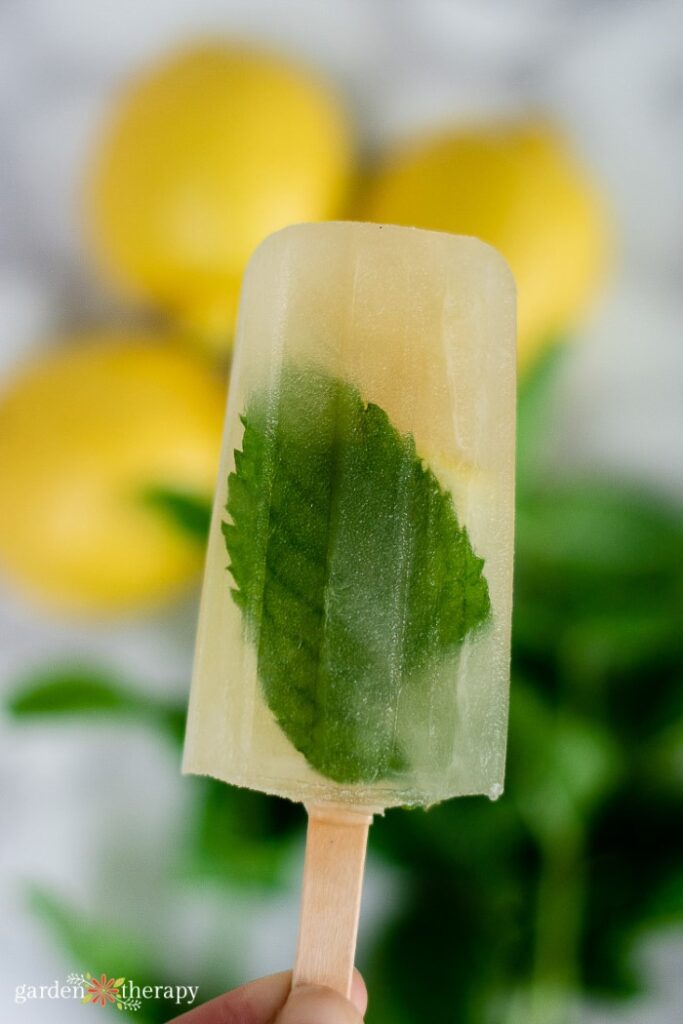
Sun Tea
Are you a big tea drinker? Sun tea is one of my favourite things to do in the summer with my herbs. Chocolate mint especially works well for sun tea. You harvest your herbs in the morning, place them in a sealed jar of water to sit in the sun, and then putter away in the garden while your tea steeps.
When you’re ready to kick your feet up at the end of the day working outside, you have a drink ready to pour over ice and cool you down.
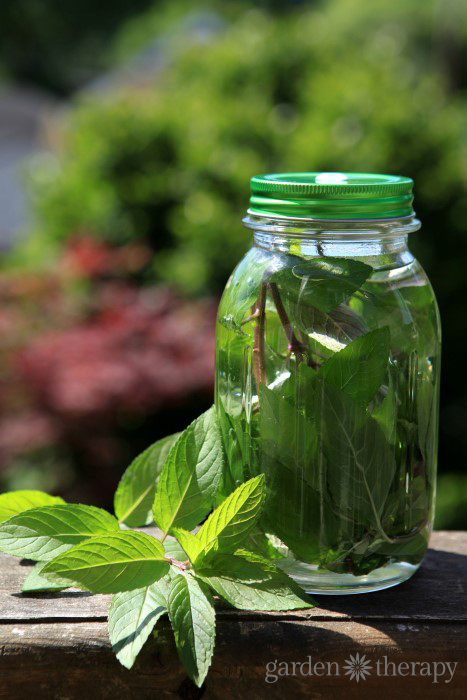
Ginger Mint Lemonade
Mint is the ideal herb for making drinks, so excuse me while I put another cooling refreshment on your mint list. If you don’t like mojitos or want a tasty non-alcoholic drink to add mint to, pair it with the flavours of ginger and lemon. Trust me; it’s a must-try combo.
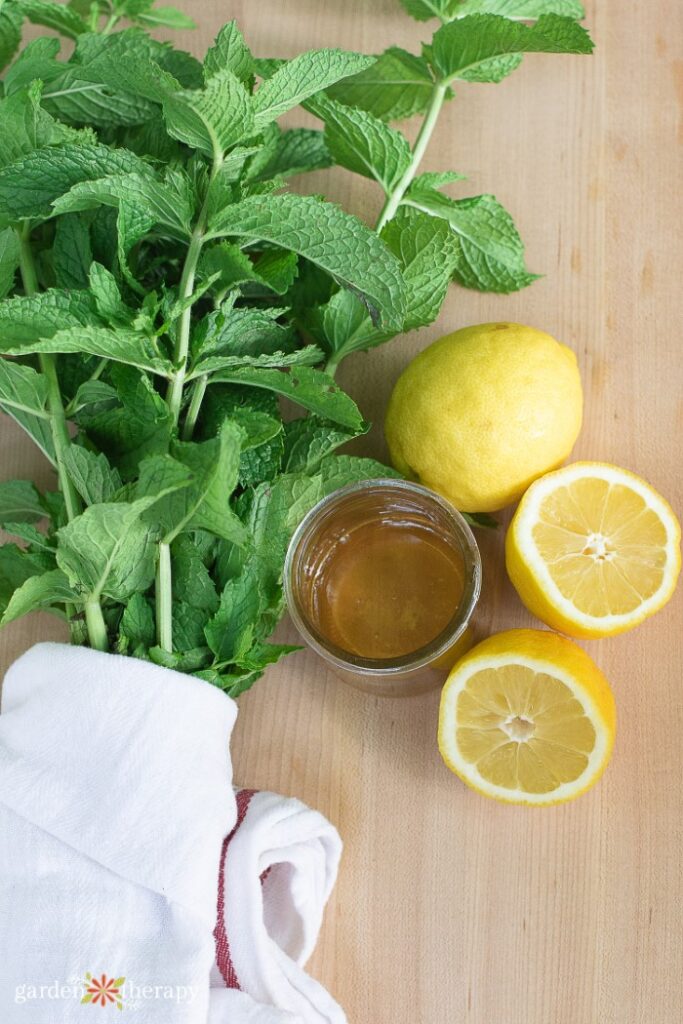
Herb Infused Vinegar
Have you ever made herb infused vinegar? You can place your mint inside vinegar to make your own artisanal vinegar blend for salads, as dips, or even to eat by the spoonful. Besides using it for food, you can also use it as a herbal extract that doesn’t contain alcohol.
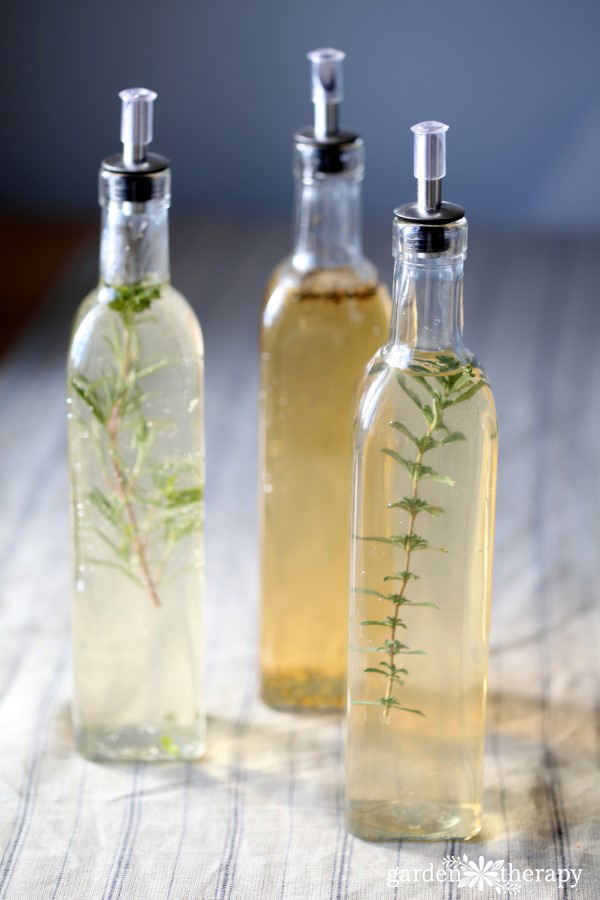
Fresh Herb Finishing Salt
You can make a delicious herb finishing salt with any of your favourite herbs. Mint works well with sweet and savory dishes, but when combined with the mint, I love to put it on top of homemade salads, sprinkled over freshly cut tomatoes and cucumbers, or added to a sauce to pour over red meat and roasted vegetables.

Frequently Asked Questions About Growing Mint
Mint takes 10-16 days to germinate. Once it germinates, it will grow quickly. Mint should take about two months to reach a mature size. When mint is four inches tall, you can begin harvesting from it. Never take more than 1/3 of the plant at a time, big or small.
Mint has an incredibly vigorous root system that spreads and grows quickly. If you don’t actively control the size of it, it will spread and take over a garden bed. For this reason, I like to grow it in containers. It can safely and quickly fill up a pot. And be happy there too!
You can grow mint in full sun or partial shade. If you grow it in full sun, it will be more compact and may need supplemental watering during heat waves to prevent the leaves from burning. When grown in the shade, it’s slightly leggier, meaning the stems will grow taller and with more space between leaves.
And that’s it on mint! If you have any more questions about growing mint, leave them in the comments below, and I’ll do my best to get back to you.





In what mint growing zone is Tucson, Arizona?